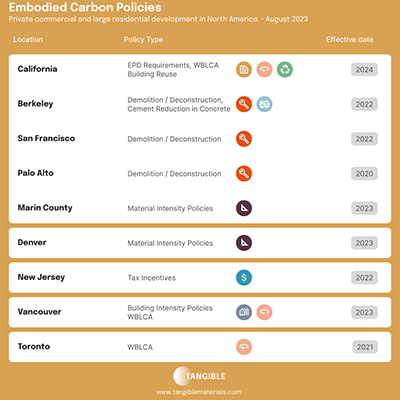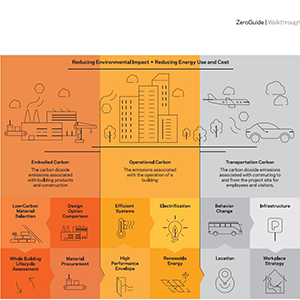By Stefanie Barrera
Architectural Staff at SMR Architects, Seattle, WA
The College of Built Environments at the University of Washington offers all 3+year M. Arch students a paid internship at different local firms after completing the first year of the program. As a student in this program, I was matched in the summer of 2016 with the Carbon Leadership Forum at the UW Integrated Design Lab.
At the Carbon Leadership Forum, I worked alongside Professor Kate Simonen and Ph.D. student Barbara Rodriguez Droguett on the Embodied Carbon Benchmark Project, which sought to develop a database of existing building embodied carbon studies to discover trends and establish better ways to reduce uncertainties in data collection.
The project was part of the Carbon Leadership Forum’s overarching goal to supporting tracking and reduction of ‘embodied’ carbon. In the past, the building industry has focused on reducing carbon emissions by increasing energy efficiency of operating buildings. Although this means buildings produce less operational carbon, tracking and reducing embodied carbon emissions has not been a priority.

Stefanie Barrera

Embodied Carbon (kgCO2e/m2) sorted by building use
That summer, the Embodied Carbon Benchmark Project team began developing a database with data from different types of buildings from all parts of the world. We first narrowed down the parameters used for our database such as building location, height, area, and Life Cycle Analysis (LCA) stages (cradle to gate, cradle to grave, etc.). While some time was spent cleaning datasets sent to the research team, additional time was spent looking for published studies to include in the database. Through this process we saw the need for established standards to prevent inconsistencies in collecting and reporting data.
Over the summer we were able to collect more than 1000 data points. The origin of the data and identity of the buildings were kept confidential. These data points were graphed by Barbara using Tableau for data analysis to identify trends, outliers and sources of uncertainty. A group of professionals with LCA expertise met to look at these findings and gave insight on future steps.
The work we completed was the first step towards developing consistent benchmarks for embodied carbon in buildings. With more research, these benchmarks will hopefully become standards for new projects, leading to a change in the way decisions are made as buildings are designed.
The first version of this post was written after the summer of 2016 when CLF kicked off the Embodied Carbon Benchmark Project. The project was led by Professor Kate Simonen and funded by The Charles Pankow Foundation.
“We sought to develop a database of existing building embodied carbon studies to discover trends and establish better ways to reduce uncertainties in data collection.”





